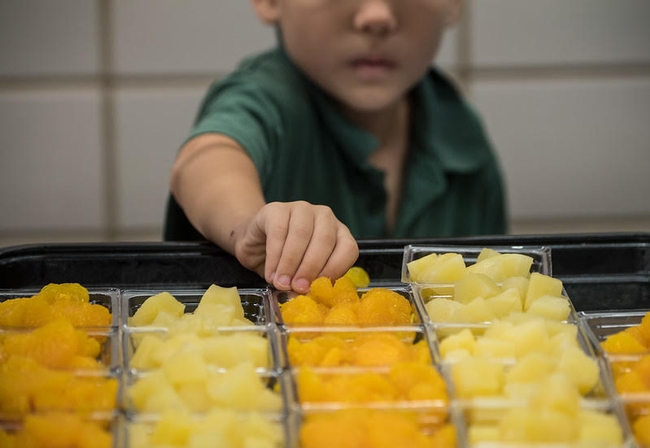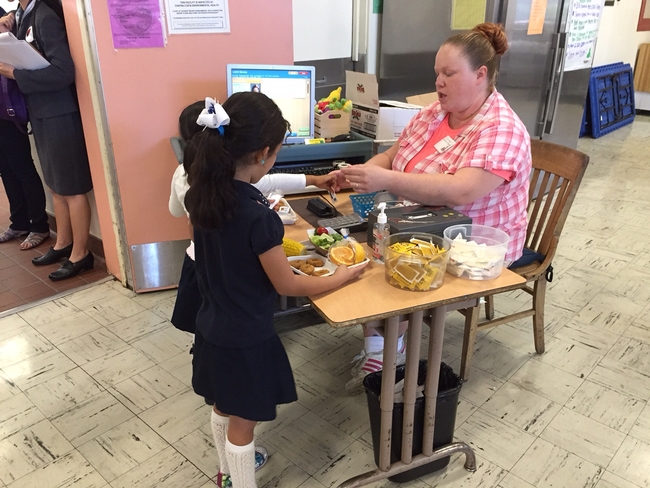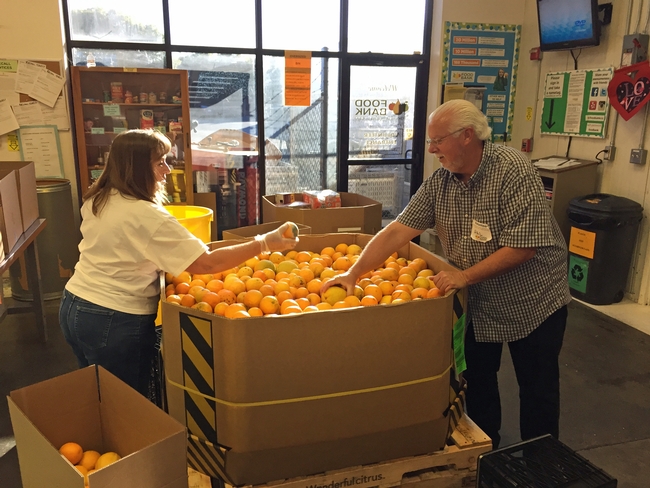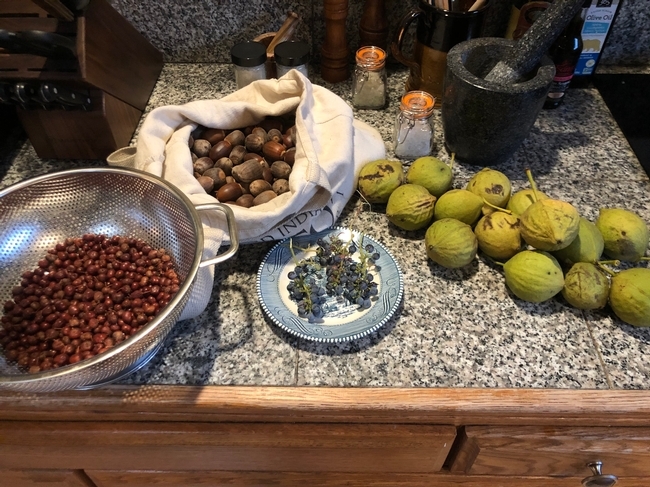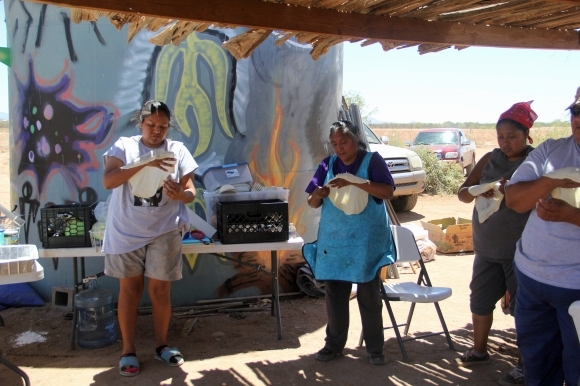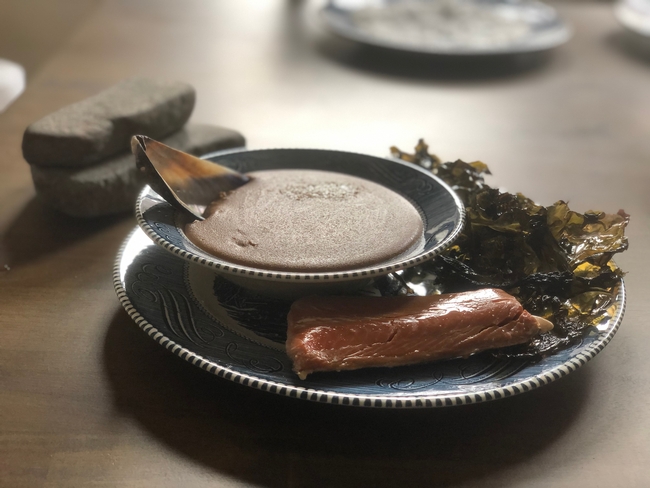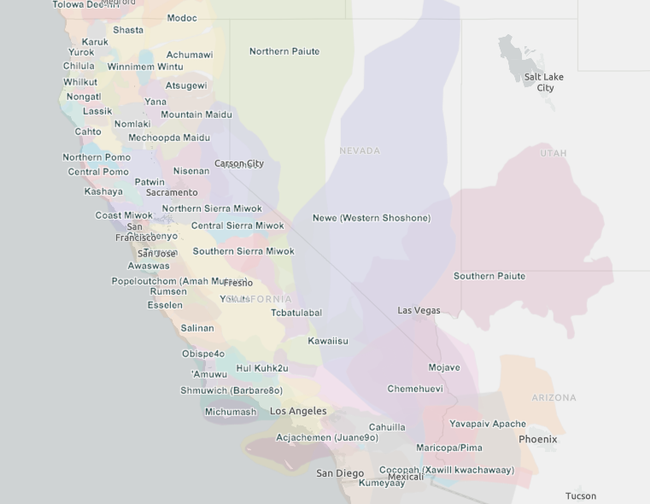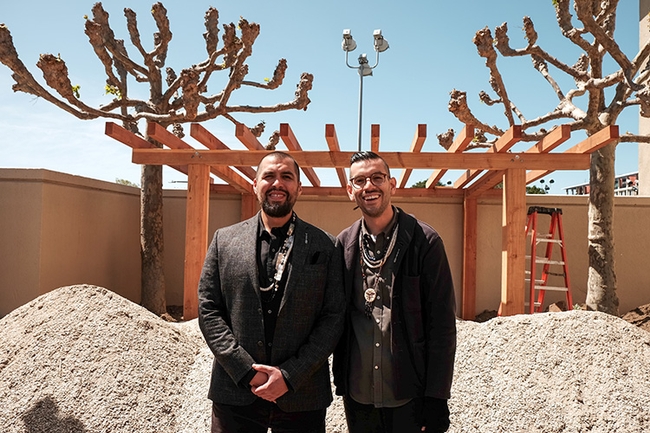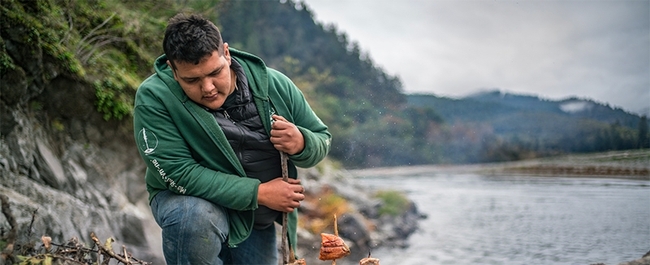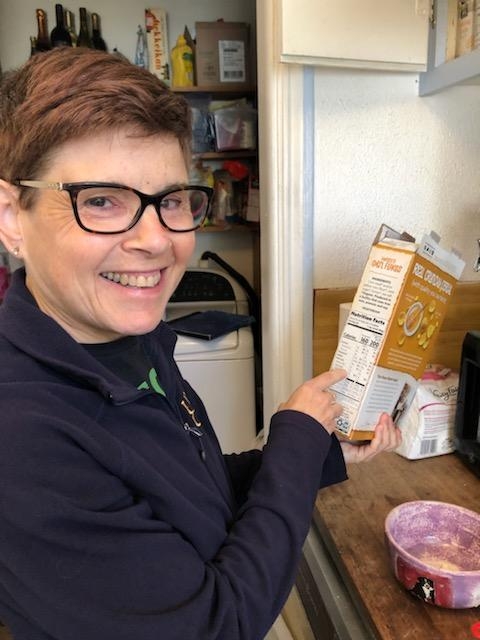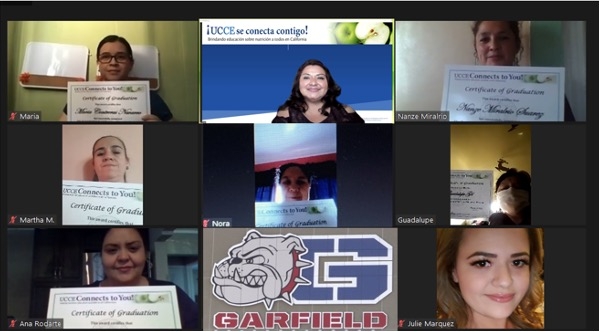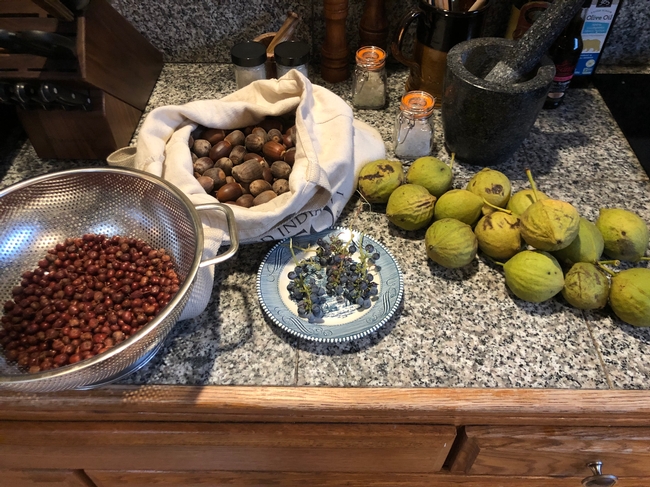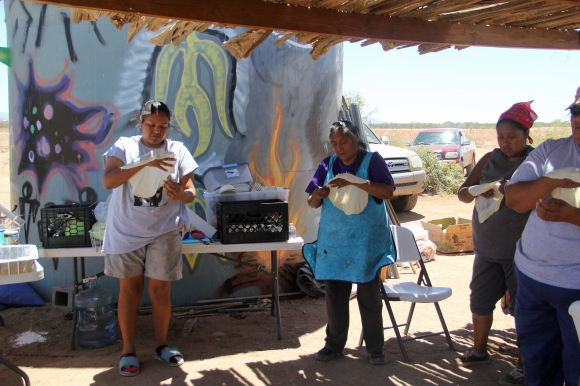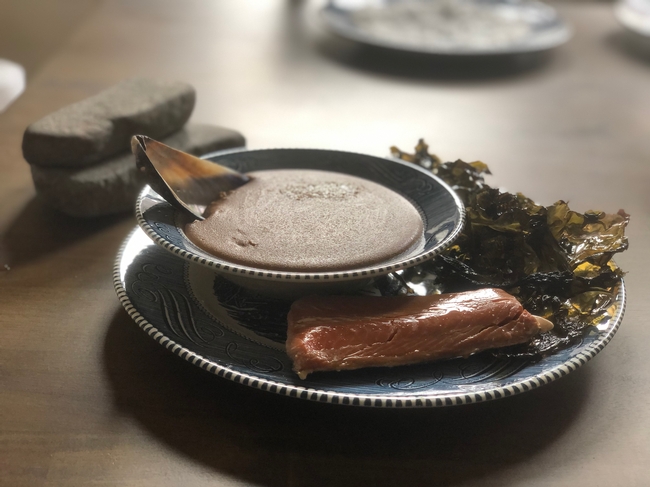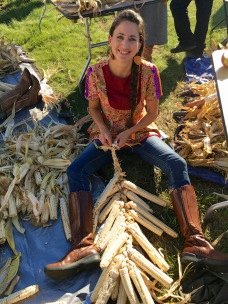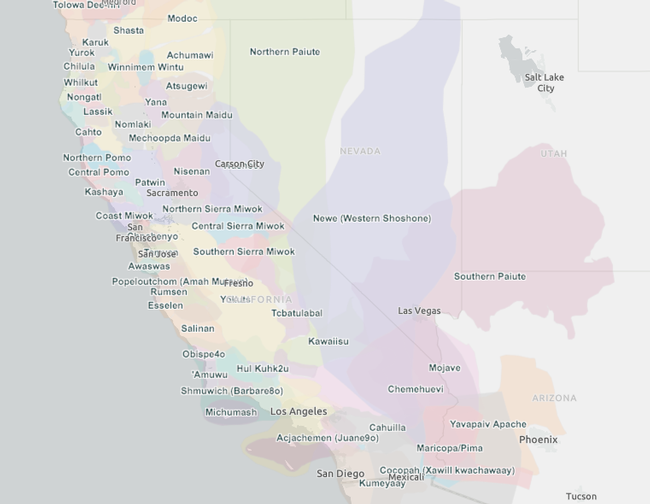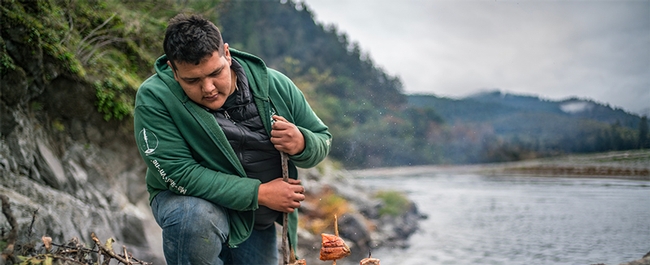Posts Tagged: family
Universal school meals increased student participation, lessened stigma
The COVID-19 pandemic exacerbated food and nutrition challenges. Many families initially lost access to meals offered by school and childcare facilities, experienced unemployment or work reductions, and faced increasing prices for food and other necessities. National and state policies and programs provided food and cash assistance to mitigate impacts on food security. Researchers at the Nutrition Policy Institute, a research center of University of California Agriculture and Natural Resources, evaluated safety-net policies implemented during the pandemic to better support families with low incomes in the U.S.
Benefits of universal school meals
The National School Lunch Program and the School Breakfast Program meet the nutritional needs of approximately 30 million K-12 students in America each day. Typically, students from families meeting income eligibility criteria receive school meals for free or a reduced price, while others pay full price.
NPI researchers Wendi Gosliner, project scientist, and Lorrene Ritchie, director and UC Cooperative Extension specialist, are co-leading studies of school meals in California in collaboration with researchers from the NOURISH Lab for Health Inclusion Research and Practice, who study school meals in Maine and other states.
During the COVID-19 pandemic, Congress funded school meals for all students at no charge, in order to address the dramatic increase in food insecurity among families with children after schools shut down in March 2020. This federal provision allowing for meals to be free for all students ended after the 2021-2022 school year, but some states elected to continue providing universal school meals with state funding, in recognition of the importance of these meals for student health and academic success.
California was the first state to adopt a statewide Universal Meals Program starting in the 2022-23 school year. To support the program's development, $650 million were invested to help schools improve kitchen infrastructure and provide staff training and technical assistance. Investments include Farm to School programs and other mechanisms to help update and improve school meals. Maine and several other states also have adopted universal school meals at least through the 2022-23 school year.
“States often act as incubators – things that work well in states sometimes get translated into federal policy,” Gosliner said. Identifying the success of the programs – and their challenges – can lead to improvements and help inform advocates and policymakers considering universal school meals policies at the state and national level.
Two of the team's research studies in California and Maine documented the benefits and challenges of universal school meals, as reported by school food authorities. Among 581 school food-service leaders in California who responded to the survey, nearly half (45.7%) reported reductions in student stigma as a result of providing free school meals to all students. Among 43 respondents in Maine, over half (51%) reported lessened stigma related to school meals being free for all. In both studies, nearly three-quarters of respondents reported increases in student meal participation. These and other data suggest that universal school meals are meeting their aim, to increase student participation while providing nutritionally balanced meals.
But when the child leaves campus, the responsibility to put a nutritious meal on the table falls on the caregiver.
“Universal school meals provide food and can ease families' budgets, but for too many families, wages as well as time and other resources are not adequate for access to and consumption of enough healthy foods and beverages,” Gosliner noted.
That is when other public programs are helpful, for example the Earned Income Tax Credit, or EITC.
Many eligible families do not claim Earned Income Tax Credit
The Earned Income Tax Credit is a national program designed to lift families out of poverty. The supplemental income can contribute up to nearly $7,000 per year for a family. Despite the EITC's known ability to improve participants' health, research shows that many EITC-eligible households in California and across the nation don't receive the benefits for which they are eligible, leaving $2 billion unclaimed in California in 2018 alone.
Gosliner led a study along with Lia Fernald from UC Berkeley and Rita Hamad from UC San Francisco to document levels of awareness, barriers to uptake, and benefits of participation in the EITC. Their recent publication reported that among 411 EITC-eligible California female caregivers, those who were younger, spoke languages other than English, and had less awareness of the EITC were less likely to receive the tax credit.
Developing a user-friendly system for providing safety-net support and, in the meantime, providing information and support to help more EITC-eligible families receive these benefits are suggested to help alleviate financial stressors. In the long term, these strategies may reduce poverty and improve the health of children.
Increasing WIC Cash Value Benefit a boon to health
In addition to universal school meals and EITC, families with low income may be eligible for the Special Supplemental Nutrition Assistance Program for Women, Infants and Children, or WIC. The program supports women and children up to 5 years old through nutrition education, nutritious foods and access to other health and social services.
One component of the WIC food packages, the Cash Value Benefit, provides participants a fixed dollar amount to supplement their family's diet with fruits and vegetables. During the pandemic, the U.S. Department of Agriculture increased this benefit from $9 to $35 per month, which was later revised to $24 per month per child in October 2021.
Ritchie contributed to a growing body of evidence on the importance and multidimensional benefits of the WIC Cash Value Benefit increase.
“Nine dollars buys only a quarter of what a child is recommended to eat every day,” Ritchie said. “The increase in Cash Value Benefit during the pandemic was an ideal natural experiment to investigate its impact.”
In collaboration with Shannon Whaley and her team at the Public Health Foundation Enterprises-WIC, NPI launched a longitudinal cohort study of nearly 2,000 California WIC participants. They found that the increased Cash Value Benefit improved WIC participant satisfaction with the program and allowed families to purchase greater quantities and varieties of fruits and vegetables.
“The increased Cash Value Benefit enabled WIC families to expose young children to new fruits and vegetables. Early exposure to a variety of fruits and vegetables is critical to establishing lifelong healthy habits,” said Ritchie.
The researchers found that the benefit increase also reduced food insecurity. It is hoped that the increase in program satisfaction translates into more eligible families enrolling and continuing to receive WIC. In November 2022, the U.S. Department of Agriculture proposed making the increased Cash Value Benefit a permanent part of WIC.
Knowing the proven benefits of the WIC program, Ritchie and colleagues from the National WIC Association, and Loan Kim at Pepperdine University, also engaged with WIC participants in other states.
In 2021, all state WIC agencies were invited to participate in a WIC satisfaction survey. Of the 12 WIC state agencies that opted to participate, Connecticut, Inter Tribal Council of Arizona, Nevada, New Hampshire and New Mexico added questions on the survey to understand how the increased Cash Value Benefit impacted children's dietary intake.
The study showed consumption of fruits and vegetables by children on WIC increased by one-third cup per day on average, which is sizable when considering the impact across the WIC population.
NPI research on universal school meals, the EITC and WIC constitute a small part of a more comprehensive approach to make healthy food more accessible, affordable, equitable and sustainable for all. The NPI provides resources such as policy briefs, peer-reviewed publications and technical assistance on several research areas such as safe drinking water, childcare and education. To learn more, please visit the Nutrition Policy Institute website.
Can food banks better promote nutrition and health?
New tool helps assess policies and practices
An estimated 53 million people in the U.S. turned to food banks and community programs for help putting food on the table in 2021. In recent decades, food banks have adopted policies and practices to make sure people not only have access to food but also healthy and nutritious food.
But until now, food banks have had few ways to evaluate those initiatives.
University of California, Davis, Assistant Professor of Cooperative Extension Cassandra Nguyen led a team of researchers to develop the Food Bank Health and Nutrition Assessment to address that concern. Their findings were published in the journal Public Health Nutrition.
“This tool will allow food banks to reflect on their current practices and determine whether they can adopt additional strategies to promote nutrition and health. It also serves as a benchmark, which they can use to track their progress over time,” said Nguyen, with the UC Davis Department of Nutrition.
Nutrition policy is more than what's on the shelf
Food banks face some common challenges in promoting nutrition, health and equity. While food banks could assess the nutritional quality of their inventory, Nguyen said promoting nutrition requires more than knowing the types of food on the shelf.
“Food banks can have nutrition policies that outline where they source food and which foods they prioritize when funding is available. They can also ensure that food pantry clients are either represented on advisory boards or are able to provide feedback about foods they would like to receive,” Nguyen said.
Additionally, food banks can take steps to make sure nutrition education materials and information about federal assistance programs for health and nutrition are available in languages spoken by recipients.
Partnerships with outside organizations and local farmers can also increase the variety and availability of nutritious foods. Food banks with diverse connections may also adapt better to unexpected spikes in need, such as during the COVID-19 pandemic.
The Food Bank Health and Nutrition Assessment was designed to evaluate these and additional objectives so food banks can identify areas of success as well as potential strategies they hadn't considered before.
Importance of data
“By having data from this assessment to show that some practices to promote nutrition and health may be difficult to implement, several food banks can raise their voices to advocate for policy changes,” Nguyen said.
Food banks with Feeding America and the Midwest Food Bank in four Midwestern states participated in the initial development of the Food Bank Health and Nutrition Assessment. In this small initial sample, most food banks asked food recipients about their preferences or whether diet-related diseases (for example, diabetes) were common, but few had current or former charitable food recipients on advisory boards.
The assessment is available for free through Feeding America, the largest nonprofit organization supporting the charitable food system, and online through the University of Illinois Extension. Food bank staff and partnering community-based professionals such as extension staff can use the assessment to improve promotion of nutrition and health.
Other authors include Caitlin Kownacki, Veronica Skaradzinski, Kaitlyn Streitmatter, Stephanie Acevedo and Jennifer McCaffrey with the University of Illinois at Urbana-Champaign; Stephen D. Ericson with Feeding Illinois; and Jessica E. Hager with Feeding America.
Funding for the research was supported by the Supplemental Nutrition Assistance Program-Education, or SNAP-Ed, in Illinois
Books, videos and songs highlight Native views on ‘thanksgiving’
UC takes some first steps in addressing historical wrongs
Thanksgiving can be a time of celebration, gratitude and sharing. It is also often a time when people assist the most vulnerable in our communities, through donations to food banks, volunteer service and similar acts of compassion. But it is also a time of remembrance and mourning in Native American communities.
The narrative that many people have been taught beginning in elementary school about the First Thanksgiving celebration in the United States is based on historically inaccurate myths that fail to acknowledge the devastation wrought by settler colonialism, including genocide, land theft, forced assimilation and cultural appropriation.
Many Native people refuse to celebrate Thanksgiving; some engage in a day of mourning, protesting the genocide wrought on their ancestors and ongoing oppression. Native scholar Philip Deloria (Standing Rock Sioux) wrote about some elements of this in his contribution to The New Yorker several years ago, but for additional information interested readers could also turn to the essay“Deconstructing the Myths of ‘The First Thanksgiving'” by Judy Dow (Abenaki) and Beverly Slapin.
Educators – in formal and informal settings – play an important role in spreading awareness of the atrocities experienced by Native peoples at the hands of the European settlers. In April of this year, University of California President Michael Drake recognized and acknowledged the historical wrongs endured by Native Americans in announcing the UC's Native American Opportunity Plan, which covers tuition and fees for California students from federally recognized tribes. But the statement fell short of acknowledging the ways in which UC has and continues to benefit as a result of those wrongs.
Free tuition for California Native Americans was one of the recommendations in the 2021 report “The University of California Land Grab: A Legacy of Profit from Indigenous Land,” co-authored by UC Berkeley's Native American Student Development program and the Joseph Myers Center, based on a two-part workshop series held in 2020 and covered recently in the June 2022 issue of UC Berkeley's alumni magazine.
While the new UC tuition and fee remission plan is a big step in the right direction, it excluded the many California Native Americans who are not members of federally recognized tribes. Fortunately, the Federated Indians of Graton Rancheria created a scholarship fund to cover tuition and fees for these students.
Another important step that University of California Agriculture and Natural Resources is taking, in alignment with recommendations from the “Land Grab” report, is the recruitment of three new UC Cooperative Extension academics centering Indigenous communities and perspectives on topics related to farming and food sovereignty, climate resilient disaster planning and policy, and beneficial burning and Indigenous land stewardship.
The focus of these positions acknowledges the importance of strengthening partnerships with Native American communities, uplifting their voices, leadership, concerns and solutions around addressing some of the most pressing environmental and societal challenges facing California communities today. Voices from the Washoe Tribe, for example, were central in the recent UC California Naturalist statewide conference along the north shore of Lake Tahoe.
Native perspectives on thanksgiving
Celebrations of harvest certainly did not originate with settlers and Native Americans sharing a meal in the 17th century. Rather, they have been integral to the fabric of Indigenous existence since time immemorial, as Native communities view “thanksgiving” as a time for honoring the ancestors, which includes the lands, plants and animals that are understood as relations.
In her book, “Braiding Sweetgrass,” Robin Wall Kimmerer describes how the Haudenosaunee people (in the northeastern U.S. and southeastern Canada), recite the Thanksgiving Address, “a river of words as old as the people themselves” known in the Onondaga language as the Words that Come Before All Else, “whenever they gathered…before anything else was done. ”
At its core, the Thanksgiving Address is an expression of gratitude for “the ones who share their gifts with the world,” including the water, the fish, the plant foods and medicines, the animals, the winds, and the sun and the moon and the stars.
Taking a decolonizing approach to Thanksgiving rejects the myths of Thanksgiving and harmful stereotypes about Native peoples that reinforce oppression, and invites opportunities for deepening a collective understanding of Indigenous history, amplifying Native perspectives that highlight the diversity of Indigenous peoples and foodways, and support Native-led food sovereignty and land stewardship initiatives that affirm contemporary presence and self-determination of Native people in 21st century America.
UC Berkeley Professor Peter Nelson (Coast Miwok and tribal citizen of the Federated Indians of Graton Rancheria) offers this helpful insight: “We have plenty of points at which we give thanks for what our non-human relations give us or honor the changing of the seasons and gathering times. The fall in my language, Coast Miwok (Tamal Machchaw), is ‘umpa walli' or ‘acorn time.' Some of these concepts don't exactly translate from English. ‘Thank you,' or ‘ka molis,' means something more like ‘I'm glad/happy.' We express a state of being or how it makes us feel. The same is true of the concept of ‘I'm sorry,' which doesn't exist in our language. We have to contrive something to the effect of ‘my heart is sad' – ‘ka wuskin sawa.' Again, a state of being and there is a sense that you should just express how to fix things if they are out of sorts. Hearing a settler apology isn't enough. Do something about it.”
What can you do?
Below are just a few ideas of how you can learn about the authentic history of Native Americans and center your Thanksgiving messaging around social and environmental justice. Equally important, through these resources, you can learn about contemporary Native American peoples and communities in both urban and rural areas.
Also included are ways to support the growing Indigenous food sovereignty movement among Native Americans to reclaim and restore their food systems through ecological and cultural restoration and self-determination.
Decolonizing the history and meaning of Thanksgiving
- Read the stories of four East Bay residents and their personal family traditions for the fourth Thursday in November: https://www.berkeleyside.org/2022/11/16/celebrate-thanksgiving-respectfully-indigenous-native-people.
- Share these powerful short videos on Thanksgiving word association and Native people describing Thanksgiving that are helpful for understanding the Native American perspective on the holiday.
- View this brief speech by Linda Coombs (Aquinnah Wampanoag), who used to direct the Wampanoag Indigenous Program and Plymouth Plantation, at the site of the presumptive original Thanksgiving meal, for a greater perspective on the myths surrounding the origins of Thanksgiving.
- Also read this speech that Frank James attempted to deliver before the 1970 Pilgrim's Progress parade in Plymouth. His rejection after the organizers heard the content of his speech led to the National Day of Mourning counter-parade that takes place each year.
- This article, “The Thanksgiving Tale We Tell Is a Harmful Lie. As a Native American, I've Found a Better Way to Celebrate the Holiday,” is a helpful resource where “Sioux Chef” Sean Sherman (Oglala Lakota) makes the case for focusing Thanksgiving on values that apply to everybody: togetherness, generosity and gratitude – as well as embracing Indigenous foods, which are centrally featured in Thanksgiving meals including turkey, corn, beans, pumpkins, maple, cranberries, wild rice, etc.
- An excellent compilation of resources for youth and families by Lindsey Passenger Wieck, can be found in “Decolonizing Thanksgiving: A Toolkit for Combatting Racism in Schools,” that includes books, articles and inspirations for lesson plans, several of which are listed below.
- Helpful book suggestions and educational resources for teaching Thanksgiving in a socially responsible way, including lesson plans for all ages, are provided by the Southern Poverty Law Center at https://www.tolerance.org/magazine/teaching-thanksgiving-in-a-socially-responsible-way.
Learn about the Indigenous history of the United States and the Native lands and people where you live
- Read Peter Nelson's “Where Have All the Anthros Gone? The Shift in California Indian Studies from Research “on” to Research “with, for, and by” Indigenous Peoples”: https://anthrosource.onlinelibrary.wiley.com/doi/10.1111/aman.13633.
- Spend some time researching the environmental and cultural history of the lands where you are standing, starting with identifying whose lands you are residing in via this interactive map of Indigenous territories and learning about how you can support them.
- Learn about how the University of California and the other land-grant institutions of higher education were founded upon the expropriation and sale of Indigenous lands that were “granted” to every state under the Morrill Act in this High Country News article and this UC Land-Grab Workshop series. On this interactive map created by UC IGIS at https://arcg.is/1GTiuv, you can identify specific parcels that were “granted” and the Native communities from whom they were taken.
- Read “The University of California Land Grab: A Legacy of Profit from Indigenous Land,” a report based on the proceedings of the 2020 University of California Land Grab forum by Rosalie Zdzienicka Fanshel, Phenocia Bauerle (Apsaálooke), Deborah Lustig and Jennifer Sowerwine. (Executive summary)
- Educate yourself about the history of Indigenous peoples and the American genocide in the United States. Here are some recommended titles:
- Benjamin Madley's “An American Genocide: The United States and the California Indian Catastrophe, 1846-1873”
- “Custer Died for Your Sins” by Vine Deloria (Standing Rock Sioux)
- Roxanne Dunbar Ortiz's “An Indigenous Peoples' History of the United States”
- Dee Brown's classic “Bury My Heart at Wounded Knee”
- Learn about Indigenous ways of knowing and Native Science. Again, here are some recommended titles:
- “Braiding Sweetgrass”by Robin Wall Kimmerer (Citizen Potawatomi)
- “Decolonizing Methodologies: Research and Indigenous Peoples” by Linda Tuhiwai Smith (Maori)
- “Indigenous Methodologies: Characteristics, Conversations and Contexts” by Margaret Kovach (Nêhiyaw and Saulteaux ancestry from Treaty Four, Saskatchewan; enrolled member of Pasqua First Nation)
- “Native Science: Natural Laws of Interdependence” by Gregory Cajete (Santa Clara Pueblo)
- Learn about how Native Americans have managed California's landscape since time immemorial in Kat Anderson's best-selling book “Tending the Wild: Native American Knowledge and the Management of California's Natural Resources”
- Share what you learn with those in their formative years. There are numerous websites with information decolonizing Thanksgiving (only some of which are referenced above), and both “Indigenous Peoples' History of the United States”(Dunbar-Ortiz) and “Braiding Sweetgrass” (Kimmerer) are available in modified versions aimed at young adult readers.
Learn about, support and amplify Native-led food sovereignty and land-stewardship initiatives in California
- Feature Native chefs in your communications such as Vincent Medina (Chochenyo Ohlone) and Louis Trevino (Rumsen Ohlone) of ot?t?oy/Café Ohlone and Crystal Wahpepah (Kickapoo) to honor their Indigenous food heritage; a PBS NewsHour crew recently featured ottoy, a collaboration between Cafe Ohlone and the Phoebe A. Hearst Museum of Anthropology, and the efforts of the museum to change its approach to repatriation of ancestral remains, funerary objects and objects of cultural patrimony.
- Dine at Cafe Ohlone, which is located at UC Berkeley.
- Watch the film “Gather,” featuring Indigenous chefs, scientists and activists around the country working to restore their spiritual, political and cultural identities through food sovereignty, including Samuel Gensaw (Yurok), co-founder of the Ancestral Guard, committed to restoring the foodways of North Coast California.
- Read about Indigenous foodways initiatives through Civil Eats reporting.
- Promote Native food purveyors, and other Native-owned businesses not only in November but year-round, as a way of honoring Native culture and ethical practices. The Intertribal Agriculture Council's American Indian Foods Program showcases American Indian food businesses and their products, many of which are grown following traditions of their ancestors.
- Learn about and support Indigenous-led land stewardship efforts to restore cultural burning practices by the Karuk Tribe, the Amah Mutsun Land Trust and the North Fork Mono Tribe, among others, to enhance healthy relationships with the land and mitigate against catastrophic fires that have devastated California communities and ecosystems.
- Read the First Nations Development Institute's report on California Indigenous land stewards for more information on both urban and rural Indigenous-led stewardship initiatives and Native perspectives across the state, including the Sogorea Te' Land Trust, an urban Indigenous women-led community organization that facilitates the return ofChochenyo andKarkinOhlone lands in the San Francisco Bay Area to Indigenous stewardship.
Honoring Native people and perspectives on Thanksgiving
- In addition to reading, you may consider visiting a local Native American museum or cultural center during some part of the holiday (courtesy of Eve Bratman) – or on December 3 for the upcoming first annual Tribal Museums Day.
- Play the song “Custer Died for your Sins” and other songs of Indigenous resistanceas music during your celebration. For starters, check out Rebel Beat Radio and Indigenous Resistance (courtesy of Eve Bratman).
- Take a moment of silence and remembrance for ancestors and the people whose land you are occupying, before your meal. Set intentions to learn more and take action to support Native people.
Families stretch food dollars with tips from UCCE nutrition educators
Consumers save over $41 a month after attending UC Cooperative Extension nutrition workshops
Consumers have seen their grocery bills rising over the last few months. To save money, buying store or generic brands and preparing meals at home are a couple of ways to adapt in the short term, according to UC Cooperative Extension nutrition educators.
UCCE nutrition educators offer tips and workshops to help families participating in the Expanded Food and Nutrition Education Program and CalFresh Healthy Living, UC program. With the information, the families are better able to make their food dollars last all month.
“After attending the workshop series, households across California were finding a savings of over $41 a month,” said Natalie Price, UCCE nutrition, family and consumer sciences advisor in Los Angeles County.
Through a series of workshops and informational fliers, participating households have had success in reducing their food bill, improving healthy food knowledge, and improving food safety.
Currently UCCE offers EFNEP and CalFresh Healthy Living, UC lessons in 40 out of the 58 California counties. From Del Norte to San Diego County, nutrition educators are working with families to improve their diet quality and physical activity through a series of workshops available to eligible households. In a series of six to nine one-hour classes, families learn how to buy, store and prepare healthy, safe and nutritious food.
The EFNEP classes held throughout the state reach, on average, more than 17,000 participants, including attendees and household members of attendees. After taking the class, one participant said, “Before I only bought what was on sale, but now I have a shopping list. I have a menu of the week and I always look at the ingredients.”
Science-based nutrition information consistently ranks as one of the top areas of interest among the public, and these programs represent one of the premier opportunities to reach Californians with relevant resources.
“Over 90% of our program graduates reported (in post-class surveys) improved food resource management skills such as planning meals, making a shopping list, and comparing food prices, which has resulted in $19 to $64 grocery bill savings per month,” said Marisa Neelon, UCCE nutrition, family and consumer sciences advisor for Alameda and Contra Costa counties.
Knowing what to buy, how to prepare and what to eat are key to help households improve both costs and nutrition. As one participant commented, “[I make] a list before I go shopping and planning what I will cook to avoid overspending.” Knowing what to buy, how to prepare and what to eat are key to help households improve both costs and nutrition.
This success has been replicated in other counties and translated into major savings for families at the grocery store. These savings can add up and make a significant impact, especially in the current environment of rising food prices.
The UCCE nutrition educators shared their top tips to save money on food:
- Check the grocery flyers for the food sales
- Make weekly menus of the food needed for your family meals and snacks
- Buy store or generic brands instead of national brands
- Read food labels to choose items that are nutrient rich
- Purchase canned and frozen foods along with fresh items
Check the CalFresh Healthy Living, UC or EFNEP webpages for nutrition education programs offered for eligible Californians in counties across the state.
UC Agriculture and Natural Resources has a list of online resources for anyone interested in becoming more active and eating healthier at https://ucanr.edu/sites/resourcedirectory.
Native people take a different view of Thanksgiving
The narrative that many people have been taught beginning in elementary school about the First Thanksgiving celebration in the United States is based on historically inaccurate myths that fail to acknowledge the devastation wrought by settler colonialism, including genocide, land theft, forced assimilation and cultural appropriation.
Many Native people refuse to celebrate Thanksgiving; some engage in a day of mourning, protesting the genocide wrought on their ancestors and ongoing oppression. Others pay respect to time-honored values and traditions centering on family, the earth and the harvest. As educators, it is important for us to understand the atrocities experienced by Native peoples at the hands of the European settlers, and Native perspectives about thanksgiving—a time of honoring the ancestors including the lands, plants and animals that are understood as relations—when we are communicating about the meaning of the Thanksgiving celebration.
Celebrations of harvest certainly did not originate with settlers and Native Americans sharing a meal in the 17th century, but rather have been integral to the fabric of Indigenous existence since time immemorial, noted UC Berkeley Professor Elizabeth Hoover (Mohawk/Mi'kmaq descent).
“For Haudenosaunee people (in the northeast), the Thanksgiving Address (Ohen:ton Karihwatehkwen, the Words that Come Before All Else) is recited before every important event,” Hoover said. “There are thanksgiving feasts held when the thunders start, when the sap flows, when it's time for the seeds to be planted, when the first wild strawberries come out, when the green beans are ready, when the green corn is ready, when the harvest is ready — many times throughout the year.”
Taking a decolonizing approach to Thanksgiving rejects the myths of Thanksgiving and harmful stereotypes about Native peoples that reinforce oppression, and invites opportunities for deepening our collective understanding of Indigenous history, amplifying Native perspectives that highlight the diversity of Indigenous peoples and foodways, and support Native-led food sovereignty and land stewardship initiatives that affirm contemporary presence and self-determination of Native people in 21st-century America.
UC Berkeley Professor Peter Nelson (Federated Indians of Graton Rancheria) offers this helpful insight: “We have plenty of points at which we give thanks for what our non-human relations give us or honor the changing of the seasons and gathering times. The fall in my language, Coast Miwok (Tamal Machchaw), is 'umpa walli or acorn time. Some of these concepts don't exactly translate from English. ‘Thank you,' or ka molis, means something more like I'm glad/happy. We express a state of being or how it makes us feel. The same is true of the concept of ‘I'm sorry,' which doesn't exist in our language. We have to contrive something to the effect of ‘my heart is sad,' ka wuskin sawa. Again, a state of being and there is a sense that you should just express how to fix things if they are out of sorts. Hearing a settler apology isn't enough. Do something about it.”
Consider centering Thanksgiving messaging around social and environmental justice by sharing resources for learning about the authentic history of Native Americans, contemporary Native American peoples and communities in both urban and rural areas, and supporting the growing Indigenous food sovereignty movement among Native Americans to reclaim and restore their food systems througheco-cultural restoration and self-determination.
The following are resources suggested by Elizabeth Hoover, Peter Nelson and others to learn more about the perspective of Native Americans on the U.S. holiday.
Decolonizing the history and meaning of Thanksgiving:
- Share these powerful short videos on Thanksgiving word association and Native people describing Thanksgiving that are helpful for understanding the Native American perspective on the holiday.
- View this brief speech by Linda Coombs (Aquinnah Wampanoag), who used to direct the Wampanoag Indigenous Program and Plymouth Plantation, at the site of the presumptive original Thanksgiving meal, for a greater perspective on the myths surrounding the origins of Thanksgiving.
- Also read this speech that Frank James attempted to deliver before the 1970 Pilgrim's Progress parade in Plymouth. His rejection after the organizers heard the content of his speech led to the National Day of Mourning counter-parade that takes place each year.
- This article, “The Thanksgiving Tale We Tell Is a Harmful Lie. As a Native American, I've Found a Better Way to Celebrate the Holiday,” is a helpful resource where Sioux Chef Sean Sherman makes the case for focusing Thanksgiving on values that apply to everybody: togetherness, generosity and gratitude, as well as embracing Indigenous foods, which are centrally featured in Thanksgiving meals including turkey, corn, beans, pumpkins, maple, cranberries, wild rice, etc.
- An excellent compilation of resources for youth and families by Lindsey Passenger Wiek, can be found in Decolonizing Thanksgiving: A Toolkit for Combatting Racism in Schools, that includes books, articles and inspirations for lesson plans, several of which are listed below.
- Helpful book suggestions and educational resources for teaching Thanksgiving in a socially responsible way, including lesson plans for all ages, are provided by the Southern Poverty Law Center at https://www.tolerance.org/magazine/teaching-thanksgiving-in-a-socially-responsible-way.
Learn about the Indigenous history of the United States and the Native lands and people where you live:
- Read Peter Nelson's Where Have All the Anthros Gone? The Shift in California Indian Studies from Research “on” to Research “with, for, and by” Indigenous Peoples.
- Spend some time researching the environmental and cultural history of the lands where you are standing starting with identifying whose lands you are residing in via this interactive map of Indigenous territories and learning about how you can support them.
- Learn about how the University of California and the other land grant institutions of higher education were founded upon the expropriation and sale of Indigenous lands that were “granted” to every state under the Morrill Act in this High Country News article and this UC Land-grab Workshop series. On this interactive map created by UC IGIS at https://arcg.is/1GTiuv, you can identify specific parcels that were “granted” and the Native communities from whom they were taken.
- Read The University of California Land Grab: A Legacy of Profit from Indigenous Land, a report based on the proceedings of the 2020 University of California Land Grab forum by Rosalie Zdzienicka Fanshel, Phenocia Bauerle (Apsaálooke), Deborah Lustig, and Jennifer Sowerwine. Executive summary
- Educate yourself about the history of Indigenous peoples and the American genocide in the United States, by reading Benjamin Madley's An American Genocide: The United States and the California Indian Catastrophe, 1846-1873i, Vine Deloria's 1969 Custer Died for Your Sins, Dunbar Ortiz's An Indigenous Peoples' History of the United States, or Dee Brown's classic Bury My Heart at Wounded Knee.
Learn about, support and amplify Native-led food sovereignty and land-stewardship initiatives in California:
- Watch the film Gather, featuring Indigenous chefs, scientists and activists around the country working to restore their spiritual, political and cultural identities through food sovereignty, including Samuel Gensaw (Yurok), co-founder of the Ancestral Guard, committed to restoring the foodways of North Coast California.
- Read about Indigenous foodways initiatives through Civil Eats reporting.
- Feature Native chefs in your communications such as Vincent Medina and Louis Trevino of Café Ohlone and Crystal Wahpepah to honor their Indigenous food heritage.
- Promote Native food purveyors, and other Native-owned businesses not only in November but year-round, as a way of honoring Native culture and ethical practices.
- Learn about and support Indigenous-led land stewardship efforts to restore cultural burning practices by the Karuk Tribe, the Amah Mutsun Land Trust, and the North Fork Mono Tribe, among others, to enhance healthy relationships with the land and mitigate against catastrophic fires that have devastated California communities and ecosystems.
- Read the First Nations Development Institute's report on California Indigenous land stewards for more information on both urban and rural Indigenous-led stewardship initiatives and Native perspectives across the state, including the Sogorea Te' Land Trust, an urban Indigenous women-led community organization that facilitates the return of Chochenyo and Karkin Ohlone lands in the San Francisco Bay Area to Indigenous stewardship.
- Read Elizabeth Hoover's blog about Native American farming and food sovereignty http://gardenwarriorsgoodseeds.com.
Honoring Native people and perspectives on Thanksgiving:
- In addition to reading, you may consider visiting a local Native American museum or cultural center during some part of the holiday (courtesy of Eve Bratman).
- Play the song Custer Died for your Sins and other songs of Indigenous resistance as music during your celebration. For starters, check out Rebel Beat Radio and Indigenous Resistance (courtesy of Eve Bratman)
- Take a moment of silence and remembrance for ancestors and the people whose land you are occupying, before your meal. Set intentions to learn more about and take action to support Native people.
Jennifer Sowerwine, UC Cooperative Extension specialist at UC Berkeley, and Sabrina Drill, UC Cooperative Extension advisor in Los Angeles and Ventura counties, collaborate with Native Americans on environmental and food sovereignty research.


